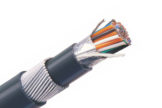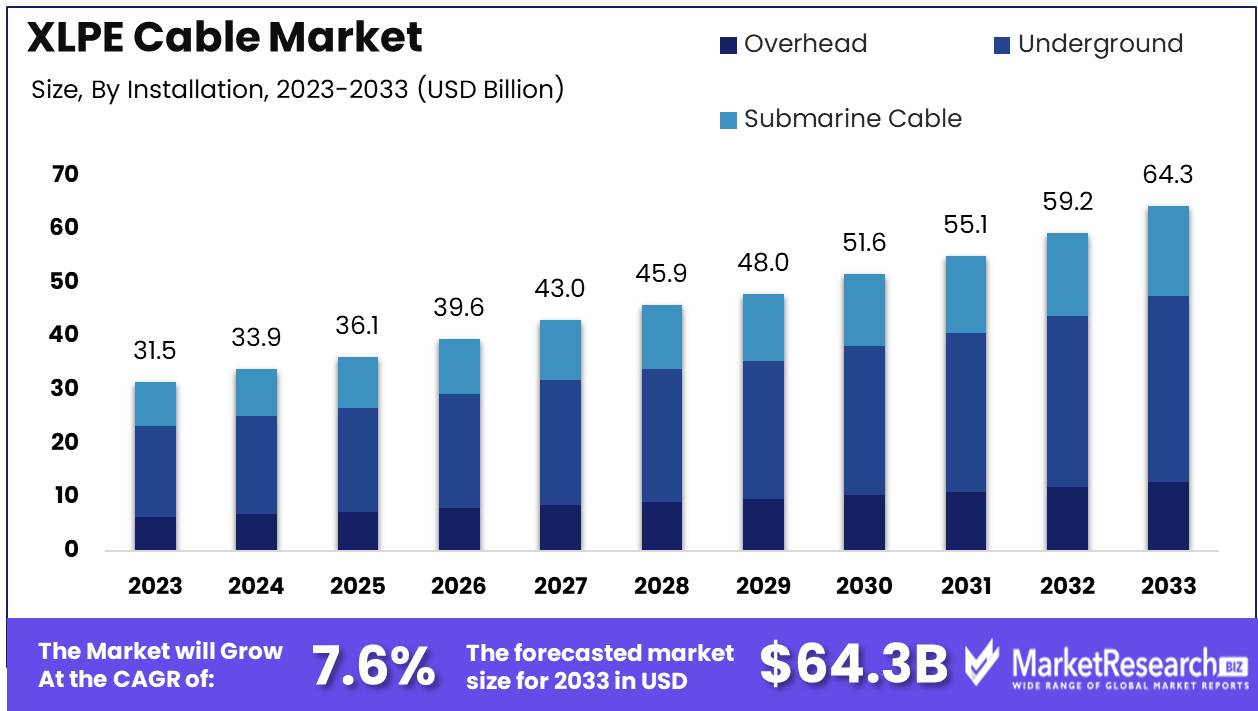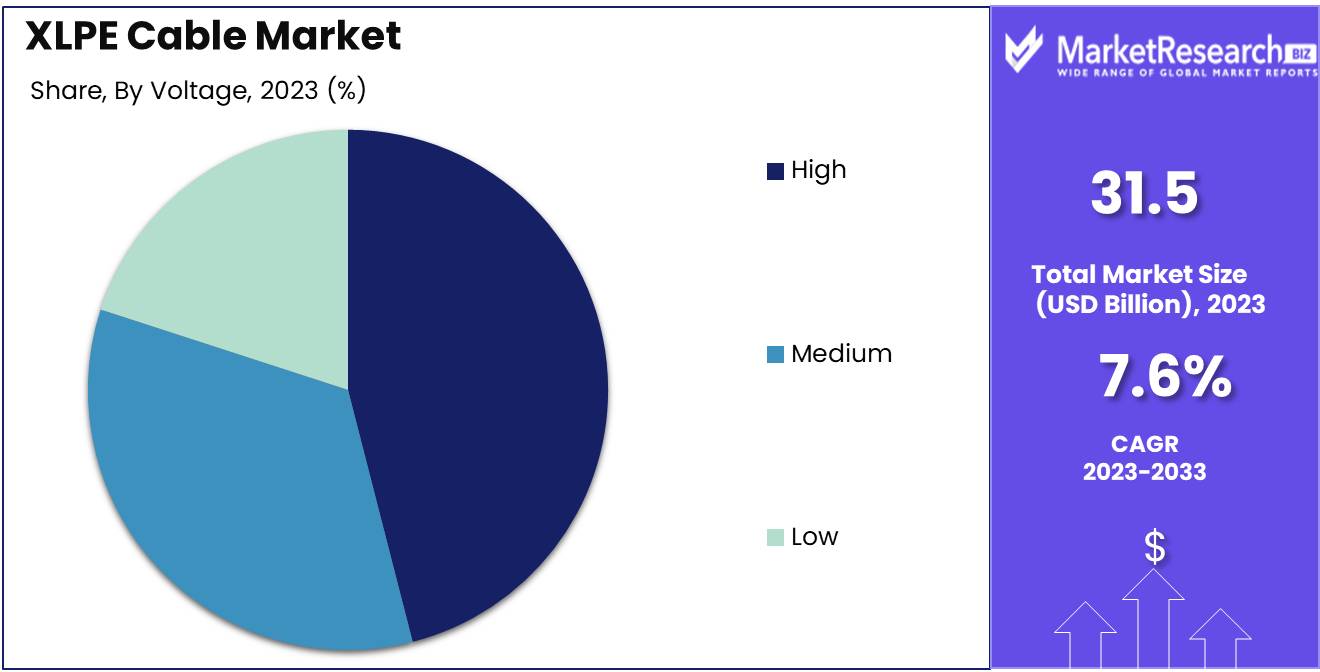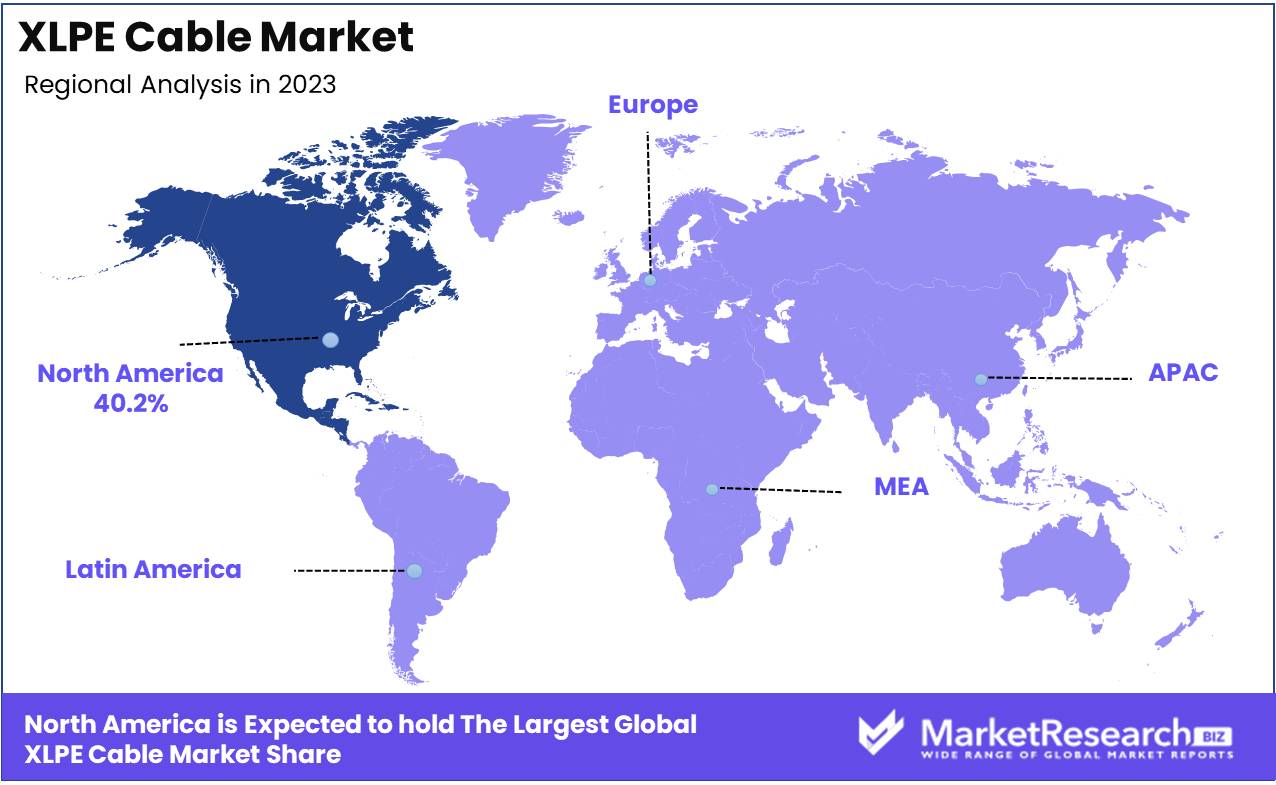
XLPE Cable Market By Installation (Overhead, Underground, Submarine Cable), , By Voltage (High, Medium, Low), , By End-Use (Power, Oil & Gas, Chemical, Manufacturing, Metals & Mining, Infrastructure & Transportation, Others), By Region and Companies - Industry Segment Outlook, Market Assessment, Competition Scenario, Trends and Forecast 2024-2033
-
6700
-
June 2024
-
171
-
-
This report was compiled by Vishwa Gaul Vishwa is an experienced market research and consulting professional with over 8 years of expertise in the ICT industry, contributing to over 700 reports across telecommunications, software, hardware, and digital solutions. Correspondence Team Lead- ICT Linkedin | Detailed Market research Methodology Our methodology involves a mix of primary research, including interviews with leading mental health experts, and secondary research from reputable medical journals and databases. View Detailed Methodology Page
-
Quick Navigation
Report Overview
The Global XLPE Cable Market was valued at USD 31.5 Bn in 2023. It is expected to reach USD 64.3 Bn by 2033, with a CAGR of 7.6% during the forecast period from 2024 to 2033.
The XLPE Cable Market encompasses the production, distribution, and utilization of cross-linked polyethylene (XLPE) insulated cables, which are widely used in power transmission and distribution systems. These cables are known for their high thermal resistance, excellent electrical properties, and superior durability, making them ideal for a variety of industrial and commercial applications.
 The XLPE Cable Market is experiencing substantial growth, driven by the increasing need for robust and efficient power transmission and distribution systems. XLPE cables, known for their superior thermal resistance, electrical properties, and durability, have become essential in both industrial and commercial applications. A significant factor contributing to this market's expansion is the long expected lifespan of primary cable systems with Dow TR-XLPE, which is estimated to be at least 40 years. This longevity underscores the reliability and cost-effectiveness of these cables, making them a preferred choice for long-term infrastructure projects.
The XLPE Cable Market is experiencing substantial growth, driven by the increasing need for robust and efficient power transmission and distribution systems. XLPE cables, known for their superior thermal resistance, electrical properties, and durability, have become essential in both industrial and commercial applications. A significant factor contributing to this market's expansion is the long expected lifespan of primary cable systems with Dow TR-XLPE, which is estimated to be at least 40 years. This longevity underscores the reliability and cost-effectiveness of these cables, making them a preferred choice for long-term infrastructure projects.It is important to note that XLPE samples aged under the ASTM D6097-01a standard have demonstrated faster water tree growth rates compared to TR-XLPE samples. This differentiation in performance underlines the need for careful material selection and quality control in cable manufacturing to ensure optimal performance and longevity.
The market is further propelled by ongoing advancements in renewable energy projects and the modernization of aging grid systems. As governments and private sectors invest heavily in smart grid technology and sustainable energy solutions, the demand for high-performance cables like XLPE continues to rise. Technological innovations in cable design and manufacturing processes are also enhancing the capabilities of XLPE cables, offering improved efficiency and resilience.
Key Takeaways
- Market Growth: The Global XLPE Cable Market was valued at USD 31.5 Bn in 2023. It is expected to reach USD 64.3 Bn by 2033, with a CAGR of 7.6% during the forecast period from 2024 to 2033.
- By Installation: Underground XLPE cables dominate the market with a substantial market share of 54%, for urban and densely populated areas where overhead lines are impractical.
- By Voltage: High voltage XLPE cables lead the market, capturing 46% of the share, reflecting their critical role in long distances with minimal losses.
- By End-Use: The power sector is the predominant end-user of XLPE cables, holding a significant 58% market share, underscoring the essential need.
- Regional Dominance: In the XLPE Cable Market, North America commands a significant 40.2% share, driven by infrastructure development and technological advancements.
- Growth Opportunity: Growing investments in infrastructure and renewable energy projects are fueling demand for XLPE cables due to their efficiency and reliability.
Driving factors
Rising Energy Demand
The global surge in energy consumption is a primary driver for the XLPE (cross-linked polyethylene) cable market. As populations grow and urbanization intensifies, there is an increasing need for reliable and efficient power distribution. XLPE cables, known for their superior thermal and mechanical properties, are well-suited to meet this demand, providing high efficiency and durability for both residential and industrial power distribution networks.
The robust nature of XLPE cables ensures minimal energy loss, thereby supporting the efficient transmission and distribution required to cater to the growing energy needs.
Renewable Energy Projects
The accelerating pace of renewable energy projects globally is significantly boosting the demand for XLPE cables. With governments and private sectors investing heavily in solar, wind, and hydroelectric power generation, the need for efficient and resilient cables is paramount. XLPE cables are ideal for these applications due to their high voltage handling capabilities and resistance to harsh environmental conditions.
As renewable energy installations increase, the market for XLPE cables expands, driven by the necessity to integrate these green energy sources into existing power grids efficiently and reliably.
Grid Modernization Initiatives
Grid modernization initiatives are crucial in transforming traditional power grids into smart grids capable of handling contemporary energy demands and integrating renewable sources. These initiatives involve upgrading aging infrastructure to enhance capacity, reliability, and efficiency, all of which are facilitated by the superior performance of XLPE cables.
These cables support higher voltage levels and longer service life compared to traditional cables, making them indispensable in modernizing and future-proofing electrical grids. The global push towards smart grid implementation ensures a steady demand for advanced cabling solutions like XLPE cables.
Restraining Factors
Complex Installation Processes
The intricate installation processes associated with XLPE cables present both challenges and opportunities for market growth. The complexity arises from the need for specialized skills, equipment, and meticulous planning to ensure proper installation and performance. While these factors can slow down deployment and increase initial costs, they also highlight the premium quality and reliability of XLPE cables, which are designed to withstand demanding conditions over extended periods.
To address these challenges, the industry is increasingly focusing on training and certification programs for installers, investing in advanced installation equipment, and developing innovative installation techniques. These efforts are aimed at reducing installation time and costs, thus making XLPE cables more accessible and attractive to a broader range of applications. As the market evolves, the development of standardized installation procedures and the proliferation of skilled professionals will likely mitigate the impact of complex installation processes, ultimately supporting the growth of the XLPE cable market.
Environmental Concerns
Environmental concerns are playing a pivotal role in shaping the XLPE cable market. The production, installation, and disposal of cables pose significant environmental challenges, prompting manufacturers to innovate and develop more sustainable solutions. XLPE cables, known for their high efficiency and longevity, already contribute to reducing energy losses and minimizing environmental impact during their operational life.
Manufacturers are increasingly adopting eco-friendly materials and processes to address environmental concerns. This includes using recyclable materials, reducing harmful emissions during production, and designing cables that require less energy to manufacture and install. Additionally, advancements in cable recycling technologies are ensuring that end-of-life XLPE cables can be repurposed or disposed of in an environmentally responsible manner.
By Installation Analysis
Underground installation of XLPE cables accounted for over 54% of the market share in 2023.
In 2023, Underground held a dominant market position in the By Installation segment of the XLPE Cable Market, capturing more than a 54% share. The underground segment's dominance is attributed to its advantages in urban areas where space constraints and aesthetic considerations are crucial. Additionally, underground cables offer greater reliability and are less prone to environmental disruptions, making them a preferred choice for metropolitan infrastructure projects.
The overhead installation segment, while significant, did not match the dominance of the underground segment. It primarily serves rural and suburban areas where cost considerations and ease of maintenance are paramount.
The submarine cable installation segment, though smaller in comparison to overhead and underground, plays a crucial role in connecting continents and islands, facilitating international data and power transmission.
By Voltage Analysis
The high voltage segment accounted for over 46% of the market share.
In 2023, High voltage held a dominant market position in the By Voltage segment of the XLPE Cable Market, capturing more than a 46% share. This dominance is driven by the increasing demand for efficient and reliable power transmission over long distances. High voltage XLPE cables are crucial for large-scale power projects, including cross-border interconnections and the integration of renewable energy sources into the grid.
The medium voltage segment, while significant, follows high voltage in terms of market share. Medium voltage XLPE cables are widely used in urban and suburban power distribution networks. They provide a balance between cost and efficiency, making them suitable for industrial and commercial applications.
The low voltage segment holds a smaller portion of the market share but remains essential for residential and smaller commercial applications. These cables are typically used for internal wiring and low power distribution needs. Although the market share is relatively limited, the segment is expected to grow steadily due to ongoing developments in residential construction and the increasing adoption of smart home technologies.

By End-Use Analysis
The power segment accounted for over 58% of the market share.
In 2023, Power held a dominant market position in the By End-Use segment of the XLPE Cable Market, capturing more than a 58% share. This dominance is attributed to the widespread use of XLPE cables in power transmission and distribution networks. The need for efficient, high-capacity cables to support the growing demand for electricity in residential, commercial, and industrial sectors drives this segment.
The oil & gas segment, while significant, trails behind the power segment in terms of market share. XLPE cables are essential for the safe and efficient transmission of power within oil and gas facilities, both onshore and offshore.
The chemical industry utilizes XLPE cables for power distribution within manufacturing plants and processing facilities. This segment's market share, though smaller, is driven by the need for reliable and durable cables that can withstand harsh chemical environments.
The manufacturing segment encompasses a diverse range of industries that require XLPE cables for various applications, including machinery, equipment, and power distribution. The segment's growth is fueled by increasing automation and modernization of manufacturing processes, which necessitate high-performance cables to ensure operational efficiency and safety.
The metals & mining segment relies on XLPE cables for power supply to mining equipment and processing plants. The segment's market share is influenced by the global demand for minerals and metals, which drives mining activities.
The infrastructure & transportation segment includes applications in railways, airports, ports, and other infrastructure projects. The growth in urbanization and the development of smart cities drive the demand for XLPE cables to support infrastructure and transportation networks.
The 'others' segment comprises various niche applications where XLPE cables are used. This includes sectors such as healthcare, telecommunications, and data centers. The diverse applications and specialized requirements of these sectors contribute to a steady demand for XLPE cables
Key Market Segments
By Installation
- Overhead
- Underground
- Submarine Cable
By Voltage
- High
- Medium
- Low
By End-Use
- Power
- Oil & Gas
- Chemical
- Manufacturing
- Metals & Mining
- Infrastructure & Transportation
- Others
Growth Opportunity
Expansion of Offshore Wind Farms
The global push towards renewable energy is significantly benefiting the XLPE cable market, particularly through the expansion of offshore wind farms. Offshore wind projects are rapidly increasing due to their high energy output potential and minimal land use. These installations require robust and reliable cables capable of withstanding harsh marine environments. XLPE cables, with their superior thermal and mechanical properties, are ideal for this purpose.
They offer high resistance to water and salt corrosion, making them the preferred choice for transmitting electricity from offshore turbines to onshore grids. As investments in offshore wind farms continue to grow, the demand for XLPE cables is expected to surge, presenting a substantial growth opportunity for the market.
Adoption of Electric Vehicles
The adoption of electric vehicles (EVs) is another critical factor driving the XLPE cable market. With the global shift towards sustainable transportation, EVs are becoming increasingly popular, necessitating extensive charging infrastructure. XLPE cables are essential in building reliable and efficient charging networks due to their excellent electrical properties and durability.
These cables ensure safe and efficient power transmission, supporting the rapid charging capabilities required by modern EVs. As governments and private entities invest in expanding EV infrastructure, the demand for XLPE cables will rise, further boosting market growth.
Latest Trends
Green Energy Solutions
The increasing emphasis on green energy solutions is a major trend influencing the XLPE cable market in 2024. As governments and corporations worldwide commit to reducing carbon footprints, the adoption of renewable energy sources such as solar, wind, and hydroelectric power is accelerating. XLPE cables, with their high efficiency and reliability, are integral to the transmission and distribution of electricity generated from these renewable sources.
The cables' ability to withstand high voltages and environmental stresses makes them indispensable for connecting renewable energy installations to the grid. This shift towards sustainable energy is expected to drive significant demand for XLPE cables, reinforcing their role in the global energy transition.
Innovations in Cable Design
Innovations in cable design are poised to revolutionize the XLPE cable market. Advances in materials science and engineering are leading to the development of next-generation XLPE cables with enhanced performance characteristics. These innovations include improved insulation properties, higher thermal resistance, and greater flexibility, making the cables easier to install and maintain.
New manufacturing techniques are reducing production costs and environmental impact. These technological advancements are expected to expand the application range of XLPE cables, making them suitable for more diverse and demanding environments, thus driving market growth.
Adoption of HVDC Systems
The adoption of High Voltage Direct Current (HVDC) systems represents a significant trend in the XLPE cable market. HVDC technology is increasingly being used for long-distance power transmission due to its efficiency and lower power losses compared to traditional AC systems. XLPE cables are well-suited for HVDC applications because of their superior insulation and electrical properties.
The growing number of HVDC projects, particularly in regions with extensive renewable energy installations, is expected to boost demand for XLPE cables. This trend underscores the critical role of XLPE cables in modernizing and enhancing global power transmission networks.
Regional Analysis
North America emerges as the dominant player, commanding a significant share of 40.2% in the market.
North America leads the XLPE cable market with a dominant share of 40.2%. The region's leadership is supported by robust infrastructure development, particularly in the construction and industrial sectors. Countries like the United States and Canada witness extensive adoption of XLPE cables in power distribution, telecommunications, and automotive applications. The market growth is driven by investments in renewable energy projects and upgrades in transmission networks, bolstering demand for high-performance cable solutions.
Europe represents another key market for XLPE cables, driven by stringent regulatory frameworks promoting energy efficiency and sustainability. Countries such as Germany, UK, and France lead in infrastructure modernization and renewable energy integration, driving demand for XLPE cables in power transmission and distribution networks.
Asia Pacific holds significant growth opportunities in the XLPE cable market, driven by rapid industrialization, urbanization, and infrastructure development across countries like China, India, and Japan. The region's expanding power generation capacity and increasing investments in telecommunications and automotive sectors drive demand for XLPE cables.
The Middle East & Africa region is witnessing steady adoption of XLPE cables, supported by ongoing infrastructure projects and investments in oil and gas, construction, and renewable energy sectors. Countries such as Saudi Arabia, UAE, and South Africa are key markets for XLPE cables, driven by the need for reliable and efficient electrical transmission solutions in harsh environmental conditions.
Latin America showcases promising growth prospects in the XLPE cable market, driven by expanding industrial activities and infrastructure development initiatives. Countries like Brazil and Mexico lead in urbanization and energy sector investments, creating demand for high-quality XLPE cables in power distribution, telecommunications, and automotive applications.

Key Regions and Countries
North America
- US
- Canada
- Mexico
Western Europe
- Germany
- France
- The UK
- Spain
- Italy
- Portugal
- Ireland
- Austria
- Switzerland
- Benelux
- Nordic
- Rest of Western Europe
Eastern Europe
- Russia
- Poland
- The Czech Republic
- Greece
- Rest of Eastern Europe
APAC
- China
- Japan
- South Korea
- India
- Australia & New Zealand
- Indonesia
- Malaysia
- Philippines
- Singapore
- Thailand
- Vietnam
- Rest of APAC
Latin America
- Brazil
- Colombia
- Chile
- Argentina
- Costa Rica
- Rest of Latin America
Middle East & Africa
- Algeria
- Egypt
- Israel
- Kuwait
- Nigeria
- Saudi Arabia
- South Africa
- Turkey
- United Arab Emirates
- Rest of MEA
Key Players Analysis
The global XLPE (cross-linked polyethylene) Cable Market in 2024 is set to witness significant growth, driven by key players such as Brugg Kabel AG, Sumitomo Electric Industries, Ltd., and ABB Ltd. These companies, along with The Prysmian Group, General Cable Corporation, and Nexans S.A., are at the forefront of technological advancements, focusing on enhancing the performance, durability, and efficiency of XLPE cables to meet the evolving demands of the energy and telecommunications sectors.
Brugg Kabel AG is expected to maintain its strong market presence through its high-quality and innovative cable solutions. Sumitomo Electric Industries, Ltd., known for its advanced material technologies, is likely to capitalize on its research and development capabilities to introduce new and improved XLPE cables. ABB Ltd, with its extensive experience in power and automation technologies, is anticipated to drive growth by integrating advanced XLPE cable solutions into its comprehensive product portfolio.
The Prysmian Group and General Cable Corporation, both leaders in the cable manufacturing industry, are expected to enhance their market share through strategic mergers, acquisitions, and the development of next-generation cable technologies. Nexans S.A., a major player in the energy infrastructure sector, is likely to focus on expanding its global footprint and enhancing its product offerings to cater to a wider customer base.
Encore Wire Corporation, NKT A/S, and Finolex Cables Ltd are expected to leverage their strong manufacturing capabilities and extensive distribution networks to drive market growth. Relemac Technologies Pvt. Ltd and Universal Cables Ltd are anticipated to focus on innovation and quality to meet the growing demand for reliable and efficient cable solutions. Eland Cables, known for its comprehensive range of cable products, is likely to capitalize on its expertise and strong market presence to expand its share in the global XLPE cable market.
Market Key Players
- Brugg Kabel AG
- Sumitomo Electric Industries, Ltd.
- ABB Ltd
- The Prysmian Group
- General Cable Corporation
- Nexans S.A.
- Encore Wire Corporation
- NKT A/S
- Finolex Cables Ltd
- Relemac Technologies Pvt. Ltd
- Universal Cables Ltd.
- Eland Cables
Recent Development
- In April 2024, Prysmian Group announced the launch of a new high-performance XLPE cable designed for offshore wind farms, enhancing efficiency and reliability in renewable energy transmission.
- In February 2024, Sumitomo Electric Industries introduced an eco-friendly XLPE cable, reducing carbon emissions and supporting sustainable energy solutions in the global power infrastructure sector.
Report Scope
Report Features Description Market Value (2023) USD 31.5 Bn Forecast Revenue (2033) USD 64.3 Bn CAGR (2024-2033) 7.6% Base Year for Estimation 2023 Historic Period 2018-2023 Forecast Period 2024-2033 Report Coverage Revenue Forecast, Market Dynamics, Competitive Landscape, Recent Developments Segments Covered By Installation (Overhead, Underground, Submarine Cable), , By Voltage (High, Medium, Low), , By End-Use (Power, Oil & Gas, Chemical, Manufacturing, Metals & Mining, Infrastructure & Transportation, Others) Regional Analysis North America - The US, Canada, & Mexico; Western Europe - Germany, France, The UK, Spain, Italy, Portugal, Ireland, Austria, Switzerland, Benelux, Nordic, & Rest of Western Europe; Eastern Europe - Russia, Poland, The Czech Republic, Greece, & Rest of Eastern Europe; APAC - China, Japan, South Korea, India, Australia & New Zealand, Indonesia, Malaysia, Philippines, Singapore, Thailand, Vietnam, & Rest of APAC; Latin America - Brazil, Colombia, Chile, Argentina, Costa Rica, & Rest of Latin America; Middle East & Africa - Algeria, Egypt, Israel, Kuwait, Nigeria, Saudi Arabia, South Africa, Turkey, United Arab Emirates, & Rest of MEA Competitive Landscape Brugg Kabel AG, Sumitomo Electric Industries, Ltd., ABB Ltd, The Prysmian Group, General Cable Corporation, Nexans S.A., Encore Wire Corporation, NKT A/S, Finolex Cables Ltd, Relemac Technologies Pvt. Ltd, Universal Cables Ltd., Eland Cables Customization Scope Customization for segments, region/country-level will be provided. Moreover, additional customization can be done based on the requirements. Purchase Options We have three licenses to opt for: Single User License, Multi-User License (Up to 5 Users), Corporate Use License (Unlimited User and Printable PDF) -
-
- Brugg Kabel AG
- Sumitomo Electric Industries, Ltd.
- ABB Ltd
- The Prysmian Group
- General Cable Corporation
- Nexans S.A.
- Encore Wire Corporation
- NKT A/S
- Finolex Cables Ltd
- Relemac Technologies Pvt. Ltd
- Universal Cables Ltd.
- Eland Cables




